Shaoxing is situated in the south corner of Yangtze River delta, Located in the western part of Ningshao Plain, the city of Shaoxing is 58 kilometers from Hangzhou in the wpm. The city has a history of 2,400 years and is a well-known historical and cultural city in China.
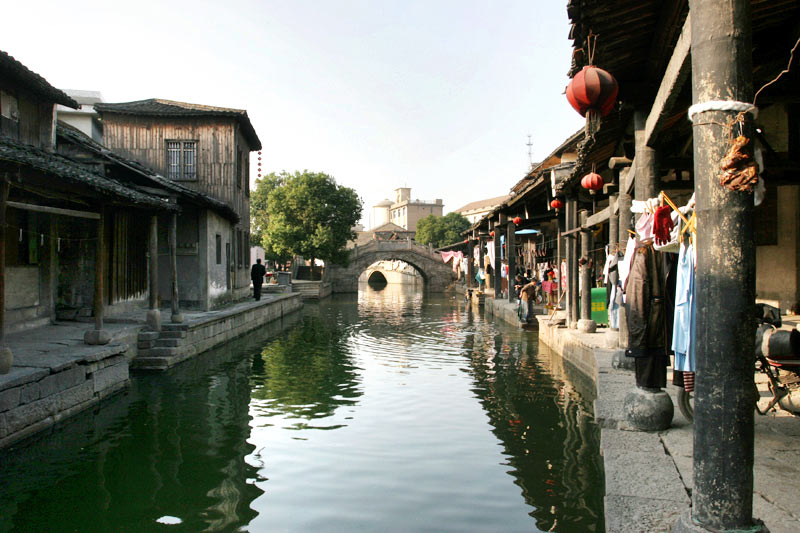
Anchang old town Picture Sources:ccnpic.com
The city of Shaoxing covers 8256 square kilometers. It has six administrative divisions, Yuecheng District, Shaoxing County, Shangyu City, Shengzhou City, Xinchang County, and Zhuji City. It has a tropical and subtropical humid monsoon climate, it has a rainfall of 1300 millimeter annually. It presents a unique watery landscape. It is north of Qiantang river with meandering Chao'e river across it, and is a famous watery region in south China. Shaoxing is dotted with lakes and crisscrossed by rivers with stone bridges over them.
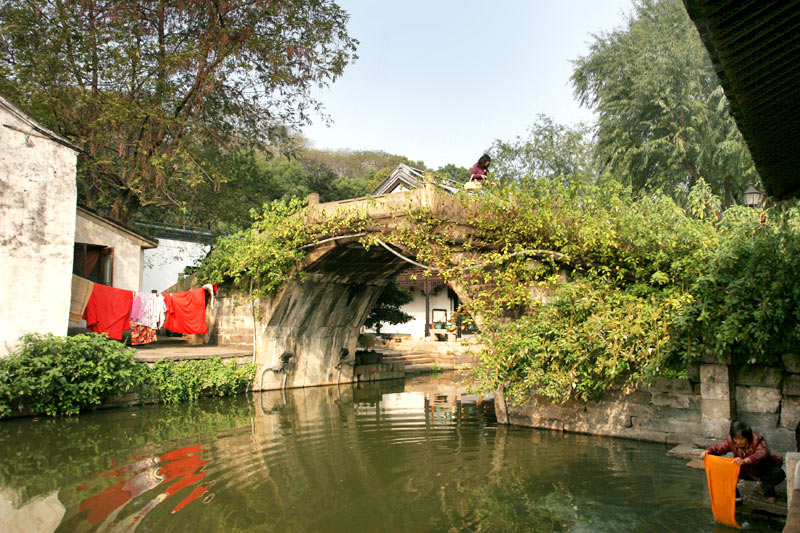
Zhubao bridge of Shaoxing watery region Picture Sources:ccnpic.com
The city of Shaoxing is one of the first 24 famous historic-cultural cities of China announced by the State Council of China. In 2070 B.C., Yu the Great gathered and awarded hundreds of officers in Kuaiji Mountain of Shaoxing and then set up the first dynasty Xia Dynasty in Chinese history. During the Age of Spring and Autumn, about 2500 years ago, Yue State located its capital in Shaoxing. Since then, Shaoxing has nourished a great many celebrities. Yu the Great, Ancestor of the Chinese Nation, Gou Jian, King of the Yue State, Lu You, a great patriotic poet, painters--Xu Wei, Zhao Zhiqian and Ren Bonian; in late history, Cai Yuanpei, Lu Xun, Qiu Jin, Xu Xilin, Tao Chengzhang, Zhou Enlai, Ma Yinchu, Zhu Kezhen etc. are all celebrities of Shaoxing, so Chairman Mao described it as the city of celebrities.The famous scenic spots in Shaoxing show the integration of a 4000-year-history and civilization of China, classic architectural culture and landscape of the water country of southern China, and depict a splendid historic picture.
There are countless beautiful landscapes and rich cultural relics, such as Kuaiji Mountain, The Mausoleum of Yu the Great, the former residence of Lu Xun, East Lake, the Orchid Pavilion, the Keyan Scenic Spot, the Great Buddhist temple, Five Waterfall in Zhuji, the ancient track road, circling river round the city, the Shen Family Garden, the ancestral residence of Zhou Enlai etc. Shaoxing has been long renowned for being the town of canals, bridges, Yellow Wine and orchids. The better-known scenic spots include East Lake, Lanting Pavilion, the tomb of Yu the Great, and the Memorial Hall of Lu Xun.
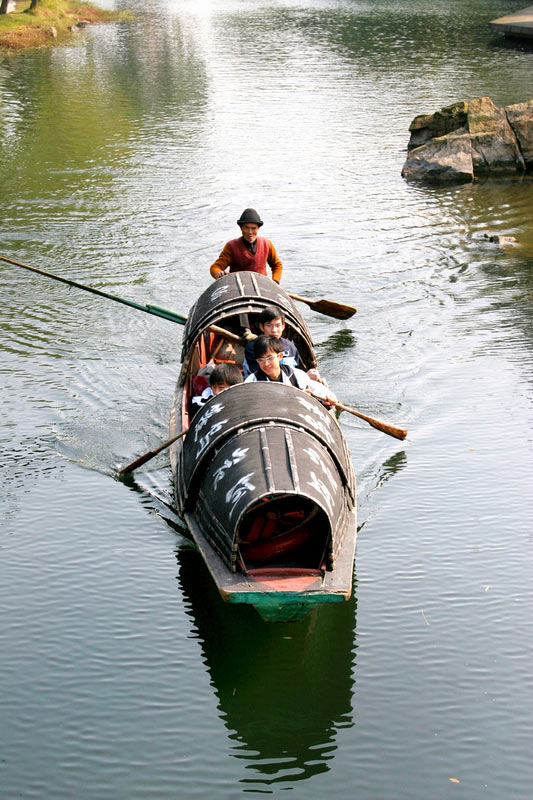
Wupeng cockleshell of Shaoxing watery region Picture Sources:ccnpic.com
The Memorial Hall of Lu Xun
Lu Xun Museum
Lu Xun Museum Established in 1953, the museum is the earliest construction in Zhejiang in memory of personalities. With the task of publicizing LuXun's deeds and words, collecting and preserving relics and data related to the writer and unveiling the ideology and esthetics in his works, it has witnessed the vicissitude of near a half century, and come to be a must-see humane landscape and a major window on Shaoxing, a famous historic and cultural city. Several state ministries including that of publicity and education commission have respectively designated the museum as a patriotism cultivation center, a demonstration base for patriotic inculcation and the model education center for the society.
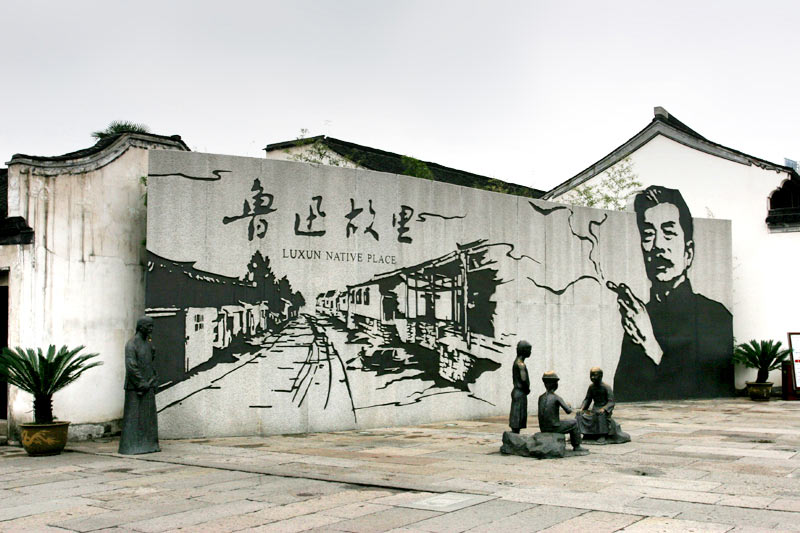
Lu Xun Guli of Shaoxing watery region Picture Sources:ccnpic.com
Covering an area of 14,000sqm, the museum comprises of LuXun's Former Residencd(including his Ancentral Residence and the Sanwei Study)--a cultural relic under the state's protection, the Baicao Garden and the Exhibition Hall. The Lu Xun's Former Residence, Baicao Garden, Sanwei Study and Ancestral Residence which are displayed in their original state, render a vivid portrayal of Shaoxing during LuXun's younger period and his joys and sorrows as a teen-ager. In the Exhibition Hall, numerous material objects, manuscripts, photos, letters, pictographs and replicas mainly give us indelible pictures of the profound impact on Lu Xun by the local cultures and the family misfortune in his early days, and depict his ten-year unwavering fighting in Shanghai, throwing limelight on the great writer and thinker in searching and reaching a lofty goal throughout his life.
Lu Xun's Former Residence
Lu Xun's Former Residence was a part of Zhoujia Xintaimen, a place at which he studied and worked at childhood. Lu Xun was born in Shaoxing on Setp.25, 1881. Ancestral Residence is displayed in its original state, render a vivid portrayal of Shaoxing during Lu Xun's younger period and his joys and sorrows as a teen-ager.
Sanwei Study
Sanwei Study was a famous private school in late of Qing Dynasty. Lu Xun studied at here from 12 to 17 years old. One day, Lu Xun went to school lately, he carved the word " Early" on his desk to inciting himself to go to school on time.
Baicao Garden
Baicao Garden was a waste vegetable farm with the area of 2,000 square meters. Lu Xun said: "There is a large garden in the rear of my house. Baicao Garden is named. There is only some wild grass in it, but it is my paradise.
Lu Xun's Ancestral Home
Established in 1754, Zhoujia Laotaimen was Lu Xun's ancestral home, which was a typical form of Taimen of Qing Dynasty. It is of brick and timber construction with facing south.
Galley Consists Of Front Hall
Gallery consists of Front Hall, Courtyard and Resting-room with the area of 1300 square meters. The content is divided into five parts according to the time and address. Five parts are: Lu Xun in Shaoxing (1881-1897); Lu Xun in Nanjing, Japan and Shaoxing (1898-1912); Lu Xun in Beijiang, Xiamen and Guangzhou; Lu Xun in Shanghai; Lu Xun with us.
Lu Xun's Cultural Square
Lu Xun's Cultural Square is located on Lu Xun Road, which is a typical scene in Shaoxing. There is a large granite stele in the eastern of square, a Lu Xun's statue in the northern of square.
Xianheng Wine Shop
Xianheng Wine Shop is located nearly Lu Xun's Memorial, which doesn't belong to scene of Lu Xun's Memorial. The visitors like to go to Shop, because of a famous literary works "Kong Yiji" written by Lu Xun according to this shop.
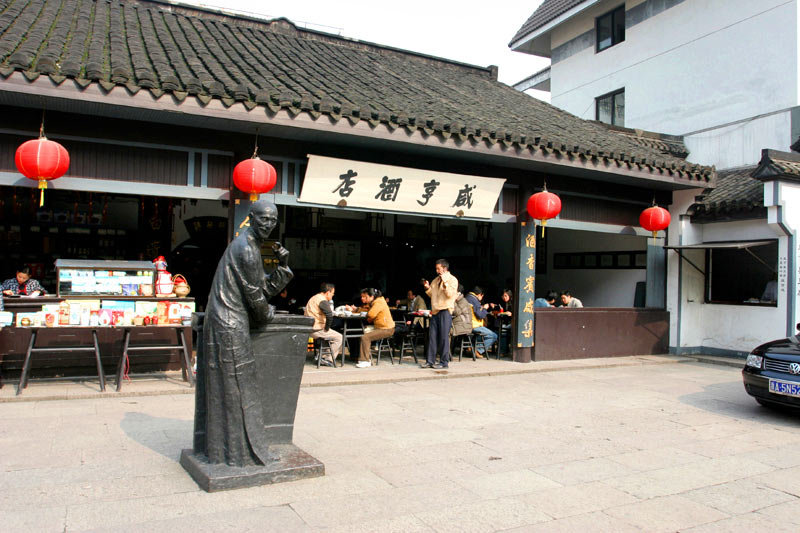
Xianheng Wine Shop of Shaoxing watery region Picture Sources:ccnpic.com
Fushan Mountain
The Terrace of King Yue
The terrace of King Yue is a famous commemorates structure. It lies at the southeast foot of Fushan Hill. The Terrace was built on the ruined site of Jinmin Pavilion in the 14th year (1222) during the reign of jiading of the song Dynasty. The Palace of King Yue and the Terrace of King Yue were renovated in the 26th year (1937) of the Republic of China, and renovated again in 1980.Presently, the Terrace is a construction with a single-eaves Chinese hip-and-gable roof, a construction of concrete modeled after timbre, in five bays.
The Palace of King Yue
Being located on mountainside of Wolong, Palace of King Yue was set for memorializing King Goujian who controlled the Yue State during the Spring and Autumn Period. This palace was firstly established in Southern Song Dynasty. Since then, it has been repaired several times. Now, there are a lot of the color murals and stone carving photographs in the Palace.
The Old Cypress
An old cypress lies behind the Terrace of King Yue, planted by the emperor of Southern Song Dynasty. Though the old cypress has been dead for 50s, the trunk and crotch are very beautiful.
The Feiyi Tower
The Feiyi Tower is located at the top of Fushan Mountain that was used to a military installation. The tower is 21m in height, which is the highest construction in Shaoxing. You can get a view of the whole city of Shaoxing at the Feiyi Tower.
The Fengyu Pavilion
At southwest corner of Fushan Mountain, you can see a pavilion that is named Fengyu. Fengyu Pavilion was established in 30s. Fengyu means rain and wind as for memorializing a martyr of Qiu Jin.
Spring waters in the Fushan Park
The Long Pond
The Long Pond is located at east of Cherry Garden that is one of four famous springs in Fushan Mountain. The spring water is very sweet and clean in the Long Pond. The others are Meng Spring, Qingbai Spring and Wulong Well.
The Qingbai Spring
The Qingbai Spring is located at southwest of the Palace of King Yue. Qingbai means that person has a clean record. The Qingbai Spring was named from the deeds of Fan Zhongyan who was a literature in Northern Song Dynasty.
The Wenzhong Tomb
Wenzhong was a government official and one of outstanding services of Yue State, but was killed by King Yue. Wenzhong Tomb on the Wolong Mountain was rebuilt in 1961. The round tomb is 1m in height and 13.2m in perimeter. The tombstone is 2.4m in height.
The Cherry Garden
Cherry is the national flower of Japanese. In order to promote understanding and friendships between the peoples of two countries, a prime minister of Japanese send the cherry seedlings to Deng Yingchao in 1981. Deng Yingchao send those cherry seedlings to Shaoxing that is Zhou Enlai's hometown, because Deng Yingchao was Zhou Enlai's wife. Now, the cherry garden is very beautiful.
The Inscription on Precipice
At northwest side of the Wenzhong Tomb, you can see many kinds of inscriptions on precipices that were done in Tong, Song and Ming Dynasties.
Lanting Pavilion
It is at the foot of Lanzhu Hill, 12 kilometers southwest of Shaoxing. Wang Xizhi, a master calligrapher of the Eastern Jin Dynasty, gave an account in his Preface to the Lanting Anthology of the ceremony he and his friends held inside the pavilion to drink and cleanse away evil influences on the third day of the third lunar month in 353, and ever since, the pavilion has become a "sacred place" among Chinese calligraphers.
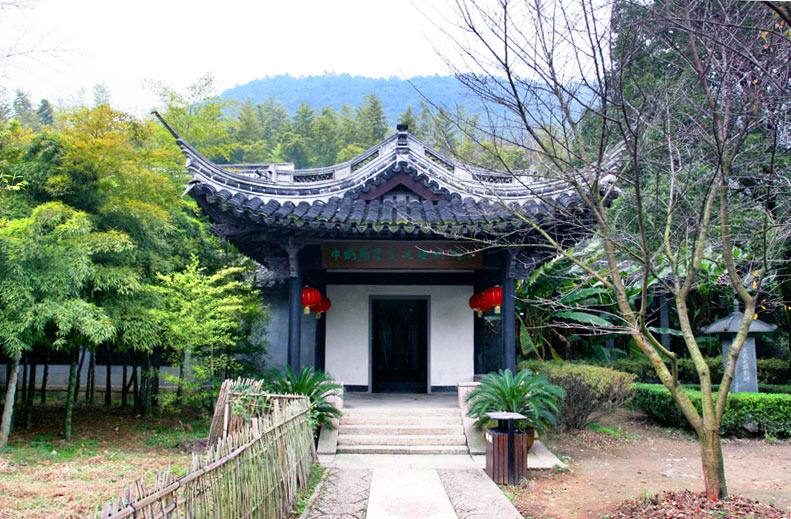
Lanting Pavilion of Shaoxing watery region Picture Sources:ccnpic.com
Great Mercy Pagoda
Great Mercy Pagoda is located on Jiefang Road in the urban district of Shaoxing City, originally in the Great Mercy Temple, which was built in the first year(1228)during the reign of Shaoxing of the Southern Song Dynasty. The pagoda has six faces, seven stories with a height of 40.5 m.The side Length of the bottom is 3.8 m,and thickness of the wall is 1.6m.
Former Residence of Wang XiZhi
Former Residence of Wang XiZhi is located at the south of Ji Mountain, west street 72 was the place where Wang stayed when he was in charge of humane studies of Kuaiji, and the rear part was a temple. It was originally called Chang An, according to the record, later changed to Jiezhu. Jiezhu temple covers an area of 1470 square meters, once was the venue where many ancient scholars gathered for studying and great philosopher Zhu Xi also gave lessons here.
In front of the temple, there are Chinese Ink Pond, Goose Pond, Ji Shan Bridge and other historical sites. To the north of Jiezhu Temple is Tan Hua Malison, Wall Paintings of the Taiping Heavenly Kingdom (1851-1864).
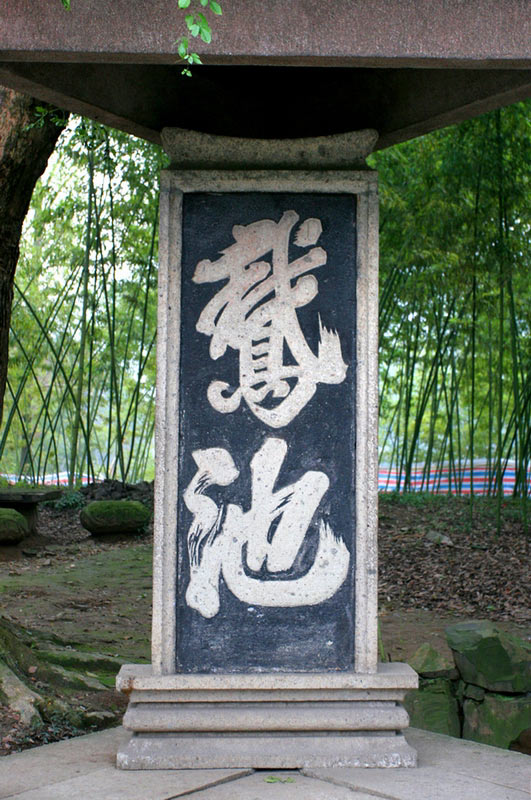
Goose Pond of monument Shaoxing watery region Picture Sources:ccnpic.com
Zhou Enlai Museum Scenic Spot
Zhou Enlai Museum Scenic Spot,consists of the Zhou Enlai Museum ,Square and the Great Mercy Pagoda. Shaoxing is Zhou Enlai's country. Located at 369 Laodong road and occupying an area of 3,800 spm with floorage of 2,100spm,the museum has been set up based on the original building which is Zhou Enlai's ancestral and his own former residence. The house with several rows of rooms is arranged on three axes and its front faces south, typical of the arranged on three axes and its front faces south, typical of the architectural style in the Ming and Qing dynasties. Today, it falls under the provincial protection and has become a patriotism cultivation center.
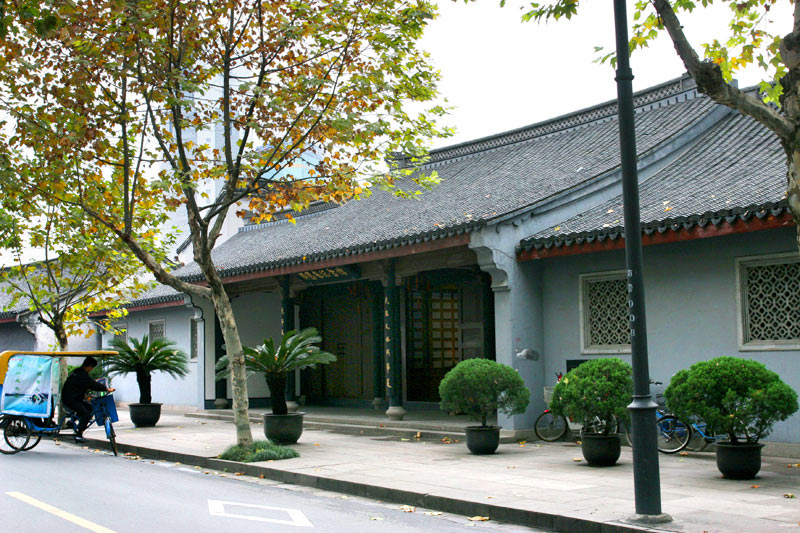
Zhou Enlai Museum of Shaoxing watery region Picture Sources:ccnpic.com
Former Residence of Cai Yuanpei
Former Residence of Cai Yuanpei is located in 13 Bifei Lane west Jiezhu Temple characterized by architectural style of Ming and Qing dynasties. It covers an area of 1338 square meters with a floor space of 987 sqm. On Nov. 1,1868, famous Chinese revolutionary, educator, scientist Cai Yuanpei was born here and also lived in this maison for a period of time.
Qiu Jin's Former Residence
Qiu Jin's Former Residence, woman revolutionary of Revolution of 1911, is located at He Ghang Tang, southwest of Tashan. Qiu Jin studied and did some training in her childhood and engaged in the revolutionary activities from 1906 when came back from abroad till her sacrifice. It is one of the national historical preservation sites.
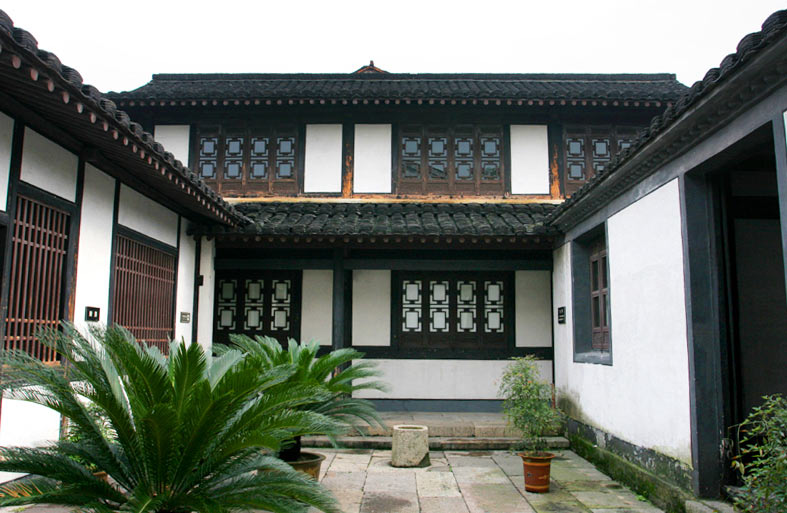
Qiu Jin's Former Residence of Shaoxing watery region Picture Sources:ccnpic.com
Lu's Mansion Houses
Lu's Mansion Houses are situated at the west end of Xinhe Alley in the urban district of Shaoxing City, facing south. They are buildings of the Ming Dynasty, laid out in three longitu dinal plane, which zoned 13 enclosed courtyards. The length from east to south, 119m, the area equivalent to about 2 hectares. It is a large-sized group of the Ming Dynasty, rarely to be seen in the south regions of the Yangtze River.
Jishan Mountain Park
Jishan Mountain Park covers an area of 2300 square meters. According to the record of Old Shanyin Annals, the name Ji Mountain came from Gou Jian Emperor of Yue Kimgdom who once ate cordate houtuynia in order to remind himself to revenge an insult, it was also called Wang Jia Mountain for the reason that master calligrapher Wang XiZi had his own estate here. The scenery consists of Buddha Shrine, Beitianzhu Temple,Jishan School run by Liu Zhongzhou famous scholar of Ming Dynasty, Carvings on the Steep in Tang Dynasty, Dong Chang- zhens Inscription.
Shen's Garden
Shen's Garden is situated on the western side of Yanghe Alley, Middle Lu Xun Road,Shaoxing City, which is a famous garden of the Southern Song Dynasty. It was well known for a story of tragic marriage. Lu You, a patriotic poet in the Southern Song Dynasty, inscribed Chaitoufeng (Hairpin of Gold Phoenix) on the wall and visited Shen's Garden and composed poems several times to express his feelings in his last years. Through twice extensions in 1987 and 1944,the plot of the whole garden has been recovered to 1.23 hectares.
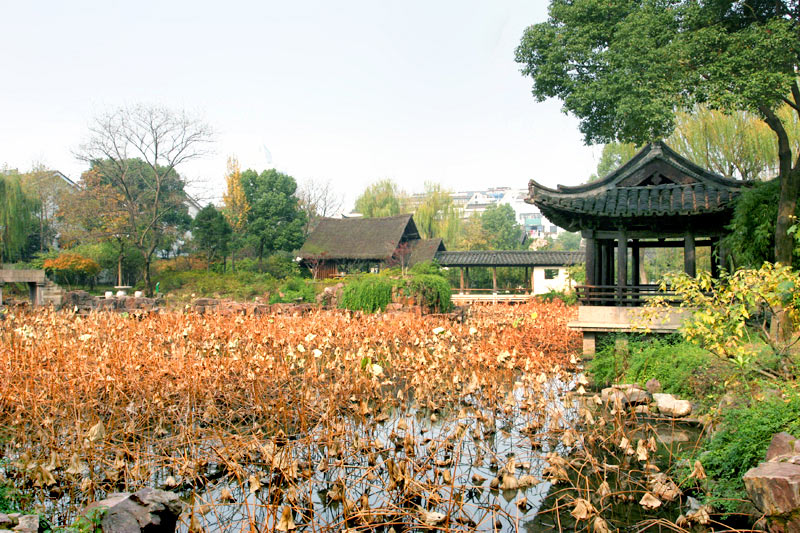
Shen's Garden of Shaoxing watery region Picture Sources:ccnpic.com
Green Cane Study
Green Cane Study, located in Qianguan Lane, was where Xu Wei, famous calligrapher, artist of Ming Dynasty was born and studied, now as a provincial historical preservation unit.
Tashan Mountain
Tashan Mountain, also called Feilai Mountain, Gui Mountain and Guai Mountain, as legend goes, flew from Dongwu Sea Langya (now ShanDong Province). In late Spring Autumn Period (about 400BD), Gou Jian, Emperor of Yue Kingdom built an observing terrace (now astronomical observatory). In late jing Dynasty Bao lin; temple was built after that Yin Tian Tower was set up at the peek, The tower and temple were destroyed and restored several times. The present Yintian Tower was built in 1534AD. (CCNPIC Linda Lee)
(Article Resource: www.ccnpic.com)